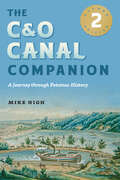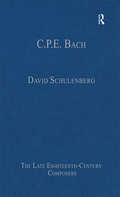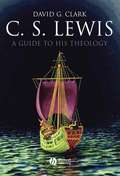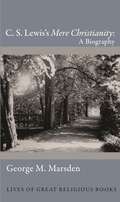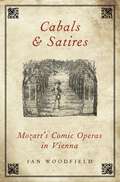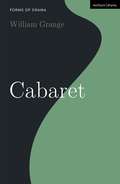- Table View
- List View
C-47/R4D Skytrain Units of the Pacific and CBI (Combat Aircraft #66)
by Chris Davey David IsbyFrom Pearl Harbor to VJ-Day, the humble Douglas C-47/R4D carried out missions every bit as strategically important, and as dramatic for the aircrew involved, as those of the fighters and bombers in the vast Pacific/CBI theatres. The C-47's wartime operations paved the way for post-war military and civil air transport, proving that aircraft could safely conduct routine flights from the USA, Australia and India throughout the Pacific and South-east Asia. The flights also demonstrated how the USAAF was able to invest in, and carry out, a mission that it had barely prepared for in terms of doctrine pre-war. In addition to linking theatres, the C-47 found itself in the vanguard of combat operations on virtually a daily basis in New Guinea, Burma, the Philippines, the SWPA and China. The importance of these missions, and the dangers faced by crews tasked with carrying them out, is chronicled in numerous first-hand accounts from the aircrew involved in this unique volume on the Allies' favourite transport aircraft of World War 2.
C-47/R4D Units of the ETO and MTO (Combat Aircraft)
by Chris Davey David IsbyThe C-47 units of the USAAF were an integral part of some of the most dramatic episodes of the European war: the airborne assaults in North Africa, Sicily, Normandy, southern France, Operation Market Garden and the crossing of the Rhine. The mass fratricide off Sicily, the night drop for D-Day and the Bastogne supply missions are also covered, along with more typical accounts of training, formation flying, airdrops and casualty evacuation missions. This book details an aircraft that remains a popular favourite and an acknowledged design classic, carrying out missions every bit as strategically important and as dramatic for the aircrew as those of the fighters and bombers.
C-47/R4D Units of the ETO and MTO (Combat Aircraft #54)
by Chris Davey David IsbyThe C-47 units of the USAAF were an integral part of some of the most dramatic episodes of the European war: the airborne assaults in North Africa, Sicily, Normandy, southern France, Operation Market Garden and the crossing of the Rhine. The mass fratricide off Sicily, the night drop for D-Day and the Bastogne supply missions are also covered, along with more typical accounts of training, formation flying, airdrops and casualty evacuation missions. This book details an aircraft that remains a popular favourite and an acknowledged design classic, carrying out missions every bit as strategically important and as dramatic for the aircrew as those of the fighters and bombers.
C.I. Lewis: The A Priori and the Given (Routledge Studies in American Philosophy)
by Quentin Kammer Jean-Philippe Narboux Henri WagnerThis edited collection explores the philosophy of Clarence Irving Lewis through two major concepts that are integral to his conceptual pragmatism: the a priori and the given. The relation between these two elements of knowledge form the core of Lewis’s masterpiece Mind and the World-Order. While Lewis’s conceptual pragmatism is directed against any conception of the a priori as constraining the mind and experience, it also emphasizes the inalterability and the unavoidability of the given that remains the same through any interpretation of it by the mind. The essays in this volume probe Lewis’s new account of the relation between the a priori and the given in dialogue with other notable figures in 20th-century philosophy, including Carnap, Friedman, Goodman, Putnam, Quine, Russell, Sellars, and Sheffer. C.I. Lewis represents a focused treatment of a long-neglected figure in 20th-century American philosophy.
C.I. Lewis: The A Priori and the Given (Routledge Studies in American Philosophy)
by Quentin Kammer; Jean-Philippe Narboux; Henri WagnerThis edited collection explores the philosophy of Clarence Irving Lewis through two major concepts that are integral to his conceptual pragmatism: the a priori and the given. The relation between these two elements of knowledge form the core of Lewis’s masterpiece Mind and the World-Order. While Lewis’s conceptual pragmatism is directed against any conception of the a priori as constraining the mind and experience, it also emphasizes the inalterability and the unavoidability of the given that remains the same through any interpretation of it by the mind. The essays in this volume probe Lewis’s new account of the relation between the a priori and the given in dialogue with other notable figures in 20th-century philosophy, including Carnap, Friedman, Goodman, Putnam, Quine, Russell, Sellars, and Sheffer. C.I. Lewis represents a focused treatment of a long-neglected figure in 20th-century American philosophy.
C. Miller Fisher: Stroke in the 20th Century
by Louis R. CaplanWhen Charles Miller Fisher was born in 1913 there was very little scientific knowledge about stroke. But thanks to him, our understanding of stroke and of other brain disorders are now well established in every neurology training program around the world. C. Miller Fisher is his story: his life, his method of study and of research, and his contributions. This work, reinforced with unequalled access to the CMF archives overseen by the Fisher estate and told in his own words (italicized in the text) from his memoirs, will shed light on one of the most important clinicians in North America and the world. He devoted his career and the great majority of every waking day to the study of stroke, both in the pathology laboratory and in people. Fisher's discoveries and contributions and those of the individuals that he trained changed the knowledge basis of stroke and vascular disease for everyone.
C. Miller Fisher: Stroke in the 20th Century
by Louis R. CaplanWhen Charles Miller Fisher was born in 1913 there was very little scientific knowledge about stroke. But thanks to him, our understanding of stroke and of other brain disorders are now well established in every neurology training program around the world. C. Miller Fisher is his story: his life, his method of study and of research, and his contributions. This work, reinforced with unequalled access to the CMF archives overseen by the Fisher estate and told in his own words (italicized in the text) from his memoirs, will shed light on one of the most important clinicians in North America and the world. He devoted his career and the great majority of every waking day to the study of stroke, both in the pathology laboratory and in people. Fisher's discoveries and contributions and those of the individuals that he trained changed the knowledge basis of stroke and vascular disease for everyone.
The C&O Canal Companion: A Journey through Potomac History
by Mike HighA comprehensive guide to one of America's unique national parks, The C&O Canal Companion takes readers on a mile-by-mile, lock-by-lock tour of the 184-mile Potomac River waterway and towpath that stretches from Washington, D.C., to Cumberland, Maryland, and the Allegheny Mountains. Making extensive use of records at the National Archives and the C&O Canal Park Headquarters, Mike High demonstrates how events and places along the canal relate to the history of the nation, from Civil War battles and river crossings to the frontier forts guarding the route to the West. Using attractive photographs and drawings, he introduces park visitors to the hidden history along the canal and provides practical advice on cycling, paddling, and hiking�all the information needed to fully enjoy the park's varied delights. Thoroughly overhauled and expanded, the second edition of this popular, fact-packed book features updated maps and photographs, as well as the latest information on lodgings and other facilities for hikers, bikers, and campers on weekend excursions or extended outdoor vacations. It also delves deeper into the history of the upland region, relaying new narratives about Native American settlements, the European explorers and traders who were among the first settlers, and the lives of slaves and free blacks who lived along or escaped slavery via the canal.Visitors to the C&O Canal who are interested in exploring natural wonders while tracing the routes of pioneers and engineers�not to mention the path of George Washington, who explored the Potomac route to the West as a young man and later laid out the first canals to make the river navigable�will find this guide indispensable.
C.P.E. Bach
by David SchulenbergThe second son of Johann Sebastian Bach, C.P.E. Bach was an important composer in his own right, as well as a writer and performer on keyboard instruments. He composed roughly a thousand works in all the leading genres of the period, with the exception of opera, and Haydn, Mozart and Beethoven all acknowledged his influence. He was also the author of a two-volume encyclopedic book about performance on keyboard instrument. C.P.E. Bach and his music have always been the subject of significant scholarship and publication but interest has sharply increased over the past two or three decades from performers as well as music historians. This volume incorporates important writings not only on the composer and his chief works but also on theoretical issues and performance questions. The focus throughout is on relatively recent scholarship otherwise available only in hard-to-access sources.
C.P.E. Bach (The\late Eighteenth-century Composers Ser.)
by David SchulenbergThe second son of Johann Sebastian Bach, C.P.E. Bach was an important composer in his own right, as well as a writer and performer on keyboard instruments. He composed roughly a thousand works in all the leading genres of the period, with the exception of opera, and Haydn, Mozart and Beethoven all acknowledged his influence. He was also the author of a two-volume encyclopedic book about performance on keyboard instrument. C.P.E. Bach and his music have always been the subject of significant scholarship and publication but interest has sharply increased over the past two or three decades from performers as well as music historians. This volume incorporates important writings not only on the composer and his chief works but also on theoretical issues and performance questions. The focus throughout is on relatively recent scholarship otherwise available only in hard-to-access sources.
C.S. Lewis: A Guide to His Theology
by David G. ClarkIn this engaging book David Clark guides the reader through the theology of CS Lewis and illuminates the use and understanding of scripture in the works of this popular author. Examines his life, work, world view, and the implications of his theology in relation to his other writings Looks at Lewis’ beliefs on the topics of redemption, humanity, spiritual growth, purgatory, and resurrection Examines the different perspectives on Lewis and his work: as prophet, evangelist, and as a spiritual mentor Explores the range and influence of Lewis’ work, from the bestselling apologetic, Mere Christianity, to the world-famous Chronicles of Narnia Features specially-commissioned artwork throughout Written in an accessible style for general readers, students, and scholars, and will introduce Lewis’ theology to a wider audience.
C. S. Lewis’s "Mere Christianity": A Biography
by George M. MarsdenMere Christianity, C. S. Lewis's eloquent and winsome defense of the Christian faith, originated as a series of BBC radio talks broadcast during the dark days of World War Two. Here is the story of the extraordinary life and afterlife of this influential and much-beloved book.George Marsden describes how Lewis gradually went from being an atheist to a committed Anglican—famously converting to Christianity in 1931 after conversing into the night with his friends J. R. R. Tolkien and Hugh Dyson—and how Lewis delivered his wartime talks to a traumatized British nation in the midst of an all-out war for survival. Marsden recounts how versions of those talks were collected together in 1952 under the title Mere Christianity, and how the book went on to become one of the most widely read presentations of essential Christianity ever published, particularly among American evangelicals. He examines its role in the conversion experiences of such figures as Charles Colson, who read the book while facing arrest for his role in the Watergate scandal. Marsden explores its relationship with Lewis's Narnia books and other writings, and explains why Lewis's plainspoken case for Christianity continues to have its critics and ardent admirers to this day.With uncommon clarity and grace, Marsden provides invaluable new insights into this modern spiritual classic.
C. S. Lewis’s "Mere Christianity": A Biography (PDF)
by George M. MarsdenMere Christianity, C. S. Lewis's eloquent and winsome defense of the Christian faith, originated as a series of BBC radio talks broadcast during the dark days of World War Two. Here is the story of the extraordinary life and afterlife of this influential and much-beloved book.George Marsden describes how Lewis gradually went from being an atheist to a committed Anglican—famously converting to Christianity in 1931 after conversing into the night with his friends J. R. R. Tolkien and Hugh Dyson—and how Lewis delivered his wartime talks to a traumatized British nation in the midst of an all-out war for survival. Marsden recounts how versions of those talks were collected together in 1952 under the title Mere Christianity, and how the book went on to become one of the most widely read presentations of essential Christianity ever published, particularly among American evangelicals. He examines its role in the conversion experiences of such figures as Charles Colson, who read the book while facing arrest for his role in the Watergate scandal. Marsden explores its relationship with Lewis's Narnia books and other writings, and explains why Lewis's plainspoken case for Christianity continues to have its critics and ardent admirers to this day.With uncommon clarity and grace, Marsden provides invaluable new insights into this modern spiritual classic.
C. S. Lewis's Mere Christianity: A Biography (Lives of Great Religious Books #24)
by George M. MarsdenThe life and times of C. S. Lewis's modern spiritual classicMere Christianity, C. S. Lewis's eloquent and winsome defense of the Christian faith, originated as a series of BBC radio talks broadcast during the dark days of World War Two. Here is the story of the extraordinary life and afterlife of this influential and much-beloved book.George Marsden describes how Lewis gradually went from being an atheist to a committed Anglican—famously converting to Christianity in 1931 after conversing into the night with his friends J. R. R. Tolkien and Hugh Dyson—and how Lewis delivered his wartime talks to a traumatized British nation in the midst of an all-out war for survival. Marsden recounts how versions of those talks were collected together in 1952 under the title Mere Christianity, and how the book went on to become one of the most widely read presentations of essential Christianity ever published, particularly among American evangelicals. He examines its role in the conversion experiences of such figures as Charles Colson, who read the book while facing arrest for his role in the Watergate scandal. Marsden explores its relationship with Lewis's Narnia books and other writings, and explains why Lewis's plainspoken case for Christianity continues to have its critics and ardent admirers to this day.With uncommon clarity and grace, Marsden provides invaluable new insights into this modern spiritual classic.
C. S. Lewis's Mere Christianity: A Biography (Lives of Great Religious Books #24)
by George M. MarsdenThe life and times of C. S. Lewis's modern spiritual classicMere Christianity, C. S. Lewis's eloquent and winsome defense of the Christian faith, originated as a series of BBC radio talks broadcast during the dark days of World War Two. Here is the story of the extraordinary life and afterlife of this influential and much-beloved book.George Marsden describes how Lewis gradually went from being an atheist to a committed Anglican—famously converting to Christianity in 1931 after conversing into the night with his friends J. R. R. Tolkien and Hugh Dyson—and how Lewis delivered his wartime talks to a traumatized British nation in the midst of an all-out war for survival. Marsden recounts how versions of those talks were collected together in 1952 under the title Mere Christianity, and how the book went on to become one of the most widely read presentations of essential Christianity ever published, particularly among American evangelicals. He examines its role in the conversion experiences of such figures as Charles Colson, who read the book while facing arrest for his role in the Watergate scandal. Marsden explores its relationship with Lewis's Narnia books and other writings, and explains why Lewis's plainspoken case for Christianity continues to have its critics and ardent admirers to this day.With uncommon clarity and grace, Marsden provides invaluable new insights into this modern spiritual classic.
The ’C-Suite’ Executive Leader in Sport: Contemporary Global Challenges for Elite Professionals
by Ian LawrenceThe 'C-Suite' Executive Leader in Sport explores the challenges of this unique role within elite professional sport. Taking a multidisciplinary approach, the book blends academic theory with practitioner interviews from leading figures working a range of elite sporting disciplines and organisations, enhancing understanding of the C-Suite executive within the world of elite sports, where the exploration of the role remains ambiguous and conflicted. The 'C-Suite' Executive Leader in Sport studies a range of issues including global sport governance and best practice, high performance organisations, masterminding innovation and change, diversity and inclusion, current and future key challenges faced by sports organisations, C-Suite leader education and professional development, and the future of the C-Suite leader in elite sport. Examining the lived experience of C-Suite executives, contributors analyse how this relates to existing research, seeking to inform and challenge those individuals responsible for identification, recruitment and promotion of C-Suite sports industry personnel. The book's findings have far reaching implications for analysis of C-Suite effectiveness and efficiency across sporting sectors.
The ’C-Suite’ Executive Leader in Sport: Contemporary Global Challenges for Elite Professionals
by Ian LawrenceThe 'C-Suite' Executive Leader in Sport explores the challenges of this unique role within elite professional sport. Taking a multidisciplinary approach, the book blends academic theory with practitioner interviews from leading figures working a range of elite sporting disciplines and organisations, enhancing understanding of the C-Suite executive within the world of elite sports, where the exploration of the role remains ambiguous and conflicted. The 'C-Suite' Executive Leader in Sport studies a range of issues including global sport governance and best practice, high performance organisations, masterminding innovation and change, diversity and inclusion, current and future key challenges faced by sports organisations, C-Suite leader education and professional development, and the future of the C-Suite leader in elite sport. Examining the lived experience of C-Suite executives, contributors analyse how this relates to existing research, seeking to inform and challenge those individuals responsible for identification, recruitment and promotion of C-Suite sports industry personnel. The book's findings have far reaching implications for analysis of C-Suite effectiveness and efficiency across sporting sectors.
C. Wright Mills and the Cuban Revolution: An Exercise in the Art of Sociological Imagination (Envisioning Cuba)
by A. Javier TreviñoIn C. Wright Mills and the Cuban Revolution, A. Javier Trevino reconsiders the opinions, perspectives, and insights of the Cubans that Mills interviewed during his visit to the island in 1960. On returning to the United States, the esteemed and controversial sociologist wrote a small paperback on much of what he had heard and seen, which he published as Listen, Yankee: The Revolution in Cuba. Those interviews--now transcribed and translated--are interwoven here with extensive annotations to explain and contextualize their content. Readers will be able to "hear" Mills as an expert interviewer and ascertain how he used what he learned from his informants. Trevino also recounts the experiences of four central figures whose lives became inextricably intertwined during that fateful summer of 1960: C. Wright Mills, Fidel Castro, Juan Arcocha, and Jean-Paul Sartre. The singular event that compelled their biographies to intersect at a decisive moment in the history of Cold War geopolitics--with its attendant animosities and intrigues--was the Cuban Revolution.
C. Wright Mills and the Ending of Violence
by J. BrewerThis book has two aims: to clarify the meaning of C. Wright Mills's depiction of the sociological imagination; and to use this to develop a sociological framework that assists in understanding the process by which communal violence has ended in Northern Ireland and South Africa. The contrast between these two societies is a familiar one, but the book is novel by developing an explanatory framework based on Mills's 'sociological imagination'. This model merges developments in the two countries at the individual, social structural and political arenas in order to account for the emergence of their peace processes.
Cabals and Satires: Mozart's Comic Operas in Vienna
by Dr. Ian WoodfieldWhen Joseph II placed his opera buffa troupe in competition with the re-formed Singspiel, he provoked an intense struggle between supporters of the rival national genres, who organized claques to cheer or hiss at performances, and encouraged press correspondents to write slanted notices. It was in this fraught atmosphere that Mozart collaborated with librettist Lorenzo da Ponte on his three mature Italian comedies--Figaro, Don Giovanni, and Così fan tutte. In Cabals and Satires: Mozart's Comic Operas in Vienna, Ian Woodfield brings the fascinating dynamics of this inter-troupe contest into focus. He reveals how Mozart, while not immune from the infighting, was able to weather satirical attacks, successfully negotiate the unpredictable twists and turns of theatre politics during the lean years of the Austro-Turkish War, and seal his reputation with a revival of Figaro in 1789 as a Habsburg festive work. Mozart's deft navigation of the turbulent political waters of this period left him well placed to benefit from the revival of the commercial stage in Vienna--the most enduring musical consequence of the war years.
Cabals and Satires: Mozart's Comic Operas in Vienna
by Dr. Ian WoodfieldWhen Joseph II placed his opera buffa troupe in competition with the re-formed Singspiel, he provoked an intense struggle between supporters of the rival national genres, who organized claques to cheer or hiss at performances, and encouraged press correspondents to write slanted notices. It was in this fraught atmosphere that Mozart collaborated with librettist Lorenzo da Ponte on his three mature Italian comedies--Figaro, Don Giovanni, and Così fan tutte. In Cabals and Satires: Mozart's Comic Operas in Vienna, Ian Woodfield brings the fascinating dynamics of this inter-troupe contest into focus. He reveals how Mozart, while not immune from the infighting, was able to weather satirical attacks, successfully negotiate the unpredictable twists and turns of theatre politics during the lean years of the Austro-Turkish War, and seal his reputation with a revival of Figaro in 1789 as a Habsburg festive work. Mozart's deft navigation of the turbulent political waters of this period left him well placed to benefit from the revival of the commercial stage in Vienna--the most enduring musical consequence of the war years.
The Cabanatuan Prison Raid: The Philippines 1945 (Raid)
by Howard Gerrard Gordon L. Rottman Mariusz KozikOn 27 January 1945 the 6th Ranger Battalion and the 6th Army Special Reconnaissance Unit (the Alamo Scouts) began the most dangerous and important mission of their careers to rescue 500 American, British and Dutch prisoners-of-war held at a camp near Cabanatuan. This daring plan was fraught with difficulties – the rangers had to struggle with harsh jungle terrain, 30 miles behind enemy lines against a far larger force, knowing that if their secret mission was leaked, the POWs would be massacred by their captors. Yet, with the help of a Filipino guerilla force, they managed to liberate 513 prisoners and kill 225 Japanese in 15 minutes, while only suffering two losses themselves. Relive the dramatic rescue in this action-packed account, complete with bird's eye view and battlescene artwork. Gordon Rottman details the build-up to and execution of the operation, analyzing the difficulties faced and the contribution made by the guerrillas. This is a story not only of extraordinary military success but a compelling tale of courage in the face of overwhelming odds.
Cabaret (Forms of Drama)
by William GrangeWhere did cabaret come from? What has it got to do with pre-war Berlin, decadent society and Nazis? How does it turn into media cabaret and the sisterhood of sleaze? Is cabaret a primary vehicle for exploring the range of sexual practices and alternative sexual identities?In this new book William Grange brings into one place for the first time the range of practices now associated with the form of cabaret. Beginning with its origins in speciality German theatres and the development both of the sheet music industry and disc recordings, Grange tracks the form through into its golden age in the 1920s and beyond.The book's three sections deal first with the emergence of Berlin as the 'German Chicago', where cabaret flourished in the midst of post-war political turmoil. The abolition of censorship allowed nude dancing and sexually explicit songs and routines. It also saw the introduction of kick-line dancing and black performers. In the book's second and third sections Grange takes the story forward into the post second-world-war world, describing how the form moved outwards from central Europe to move across the whole world, reaching Singapore and Australia, and as it did so settling into the range of forms in which we know it today. Some of these forms became 'media cabaret' looking towards the new media age, the postmodernism that followed on from modernism. To this age, even in its new forms, cabaret brought its old habits of making challenges to assumptions around gender identities and sexual practices. As throughout its whole history, cabaret was a form that provided particular vehicles for female performers. And whereas it once served up whore songs and nude dancing it now offers a sisterhood of sleaze.
Cabaret (Forms of Drama)
by William GrangeWhere did cabaret come from? What has it got to do with pre-war Berlin, decadent society and Nazis? How does it turn into media cabaret and the sisterhood of sleaze? Is cabaret a primary vehicle for exploring the range of sexual practices and alternative sexual identities?In this new book William Grange brings into one place for the first time the range of practices now associated with the form of cabaret. Beginning with its origins in speciality German theatres and the development both of the sheet music industry and disc recordings, Grange tracks the form through into its golden age in the 1920s and beyond.The book's three sections deal first with the emergence of Berlin as the 'German Chicago', where cabaret flourished in the midst of post-war political turmoil. The abolition of censorship allowed nude dancing and sexually explicit songs and routines. It also saw the introduction of kick-line dancing and black performers. In the book's second and third sections Grange takes the story forward into the post second-world-war world, describing how the form moved outwards from central Europe to move across the whole world, reaching Singapore and Australia, and as it did so settling into the range of forms in which we know it today. Some of these forms became 'media cabaret' looking towards the new media age, the postmodernism that followed on from modernism. To this age, even in its new forms, cabaret brought its old habits of making challenges to assumptions around gender identities and sexual practices. As throughout its whole history, cabaret was a form that provided particular vehicles for female performers. And whereas it once served up whore songs and nude dancing it now offers a sisterhood of sleaze.
Cabaret Macabre: the brilliant new locked room mystery by Tom Mead (A Spector Locked-Room Mystery #3)
by Tom Mead'Cabaret Macabre really had it all... The twisted and complex puzzle totally foxed me, and although I hate to admit it, I really didn't have a clue whodunnit! Entertaining and fiendishly clever.' Joy Ellis, #1 bestselling authorSleuth and illusionist Joseph Spector investigates his most complex case yet in this gripping new locked-room murder mystery, set in an English country house just before the Second World War.Hampshire, 1938. Victor Silvius is confined in a private sanatorium after attacking prominent judge Sir Giles Drury. When Sir Giles starts receiving sinister letters, his wife suspects Silvius. Meanwhile, Silvius' sister Caroline is convinced her brother is about to be murdered... by none other than his old nemesis Sir Giles. Caroline seeks the advice of Scotland Yard's Inspector Flint, while the Drurys, eager to avoid a scandal, turn to Joseph Spector. Spector, renowned magician turned sleuth, has an uncanny knack for solving complicated crimes – but this case will test his powers of deduction to their limits. At a snowbound English country house, a body is found is impossible circumstances. Spector and Flint's investigations collide as they find themselves trapped by the snowstorm where anyone could be the next victim – or the killer...What reviewers are saying about Cabaret Macabre:'An intricately plotted golden age locked room mystery. Inventive and intriguing.' Ambrose Parry'There are so many intricate layers to this ingenious plot. It truly is the matryoshka of mysteries!' Victoria Dowd'A twisty-turny, fun and very satisfying mystery.' Alison Moore"Stunning. Magic and murder and cleverness. Protagonist Joseph Spector will put a spell on you." Barbara Nadel, author of the Çetin Ikmen series, recently filmed for Paramount+ as The Turkish Detective'There are Agatha Christie-like twists aplenty' Michael Dirda, Washington PostReviews for Tom Mead'Ingenious' Guardian'Great fun' The Times'What more could any fan of classic crime wish for?' Martin Edwards'A sharply drawn period piece' New York Times'An intricate "impossible" crime that completely fooled me' Peter Lovesey




